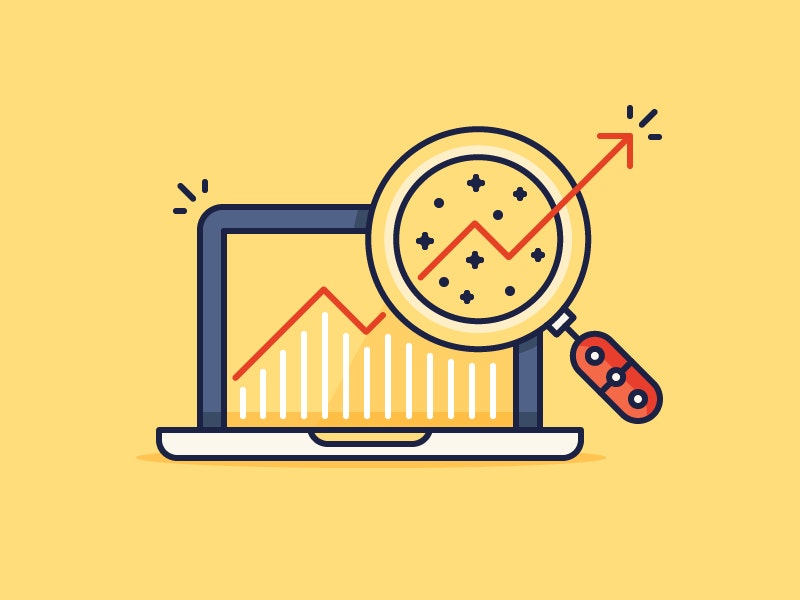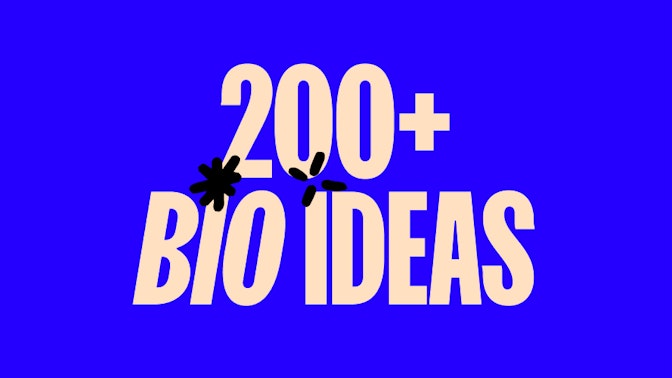As a dropshipping store owner, one thing you need to know before building your website is how to use search engine optimization (SEO) for your business. Dropshipping sites have a unique set of SEO obstacles to overcome as opposed to stores who stock their own inventory, so it’s important that you know how to use SEO. This beginner’s guide to SEO is designed for people who are new to this concept. It is also tailored to those working in the dropshipping business or who have data feed-based stores. That said, anyone looking to get a grasp on SEO for beginners will gain invaluable advice for growing the amount of organic traffic their store or webpage receives. Completely new to this concept? Not to worry! Here you will learn how to SEO without needing any additional background knowledge.
The first important thing to note before you learn how to use SEO for your business is that there are lots of pieces to the puzzle that matter. Google itself is becoming far more sophisticated in its analysis of quality content, so it’s important to understand the different characteristics that the algorithms are using to rank your content. In other words, SEO isn’t as simple as filling a piece of content with as many optimized keywords as possible. It’s also about producing quality writing that adds knowledge and presents information in a manner that is useful to your readers. This SEO guide is structured into two main parts. In the first section we will be covering key concepts about SEO and then we will delve into some actionable SEO guidelines that you should follow in order to achieve success.
Post Contents
- SEO for Beginners
- SEO Guide: Key Concepts
- SEO Guidelines for Keyword Counts
- H1 Tags for Dropshipping SEO
- Title Tags for Dropshipping SEO
- How to Use SEO in Your Meta Descriptions
- How to SEO Using Internal Links
- SEO Guide to Backlinks
- How to SEO Better Using External Links
- Canonical Links: SEO Guidelines for Beginners
- Create a Sitemap for Your Dropshipping SEO Strategy
- How Paginated Pages Can Boost Your Rankings
- SEO Guidelines for Schema
- Datafeeds and Dropshipping SEO
- How to SEO: Tips & Tricks
- SEO for Beginners: Conclusion



SEO for Beginners
So first, let’s discuss the basics of what SEO actually is. After all, this is an article on SEO for beginners, and we did say you don’t need any background knowledge to get something out of reading this post. SEO stands for search engine optimization, and in simplest terms, the result of good SEO is higher rankings when a person enters related keywords into a search engine. The aim here is to increase organic traffic to your site, i.e. traffic that you acquire without the use of paid advertising. It is an amazing strategy for gaining visibility for your brand and ultimately increasing sales without having to rely so heavily on doling out money for a large marketing budget.
SEO is actually used for several different types of content searches including photo, video, news, and even academic papers. With dropshipping ecommerce on the rise as an increasingly popular business model, knowing how to use SEO correctly can be a crucial element of setting yourself apart from competition.
→ Click Here to Launch Your Online Business with Shopify
SEO is made up of many different interrelated practices, and it only works best when you account for all of them. One fundamental aspect of SEO is incorporating carefully researched keywords into your content. It can be tempting to throw those keywords into the post as much as possible, but SEO practices are actually about achieving the best balance between several other factors including things like originality, writing quality, internal linking, site structure, social proof, and more. Another important part of knowing how to use SEO effectively is carefully combing your site for any errors or problems that might be holding it back from better Google rankings. Sites like Screaming Frog can help you identify such problem factors as slow loading time and mobile friendliness to the URL structure and formatting of your content.
As you get familiar with the different concepts and factors that are key to SEO, you’ll quickly realize the importance of optimizing your product page with keywords, links, and so forth. It can be tempting to inject a piece of content with as many of a given keyword as possible or to stuff it with tons of internal links. Be wary of doing so, however. Above all else, you want to make sure the piece of content remains natural, readable, and otherweise user-friendly. This is one of the most crucial elements of understanding how to use SEO to the benefit of your business.
Also note that learning how to use SEO for your business isn’t something you can do overnight. It’s a set of strategies that work best when you take a long-term approach and are committed to researching and staying up to date on the various elements of practicing SEO because they change continually as the internet grows more sophisticated in its analytical capabilities.
With this basic understanding of SEO and what goes into the rankings that Google creates, let’s explore in more detail some of the key concepts associated with SEO that go into successfully boosting rankings and organic traffic. This information will serve as the foundation for your knowledge of how to use SEO most effectively.
SEO Guide: Key Concepts
Before we go over the actionable ways you can boost your SEO rankings, we will need to cover a few key concepts, as no SEO guide would be complete without them, especially not one intended to explain SEO for beginners!
SEO Guidelines for Keyword Counts
The length of content on each page of your website plays an important role in dropshipping SEO rankings. The more words you include on your content page, the easier it is for search engines to understand what your page is about. In fact, this is one of the most fundamental and widely known aspects of understanding how to SEO.
The first aspect of using keywords in your web text is including them at an optimal ratio with the amount of text overall. That’s why as part of this SEO guide, we recommend that you include at least 350 to 500 words per page. Bear in mind that the content needs to be useful to your user so that they’ll have a beneficial experience when visiting your store. Therefore, the content itself must also look natural. This is one of the most important steps in learning how to use SEO properly. From the text itself, you can begin to optimize with keywords, links, and other strategies to improve your rankings.
Because you want the text to look natural and be useful to those who visit your site, stuffing content in at the bottom of a page or hiding it under a menu or other expandable field can result in site penalization. Instead, try to be thoughtful about the content you incorporate into your website. If you’re looking to include more content on a category page, for example, try adding content in the form of an introduction to welcome visitors. If it’s a product page, on the other hand, you can add content describing each product in detail.
The following questions will help get the juices flowing if you’re not sure what to say. What is it? Who is it for? Where can it be used? When is the best time to use it? Why should your customers use it? How should it be used? Don’t forget to describe your product’s competitive advantage.
H1 Tags for Dropshipping SEO
Now, let’s talk titles and tags. Your H1 tag is like the title of a book. As the search engines read it, it’s one of the first things that describes what a visitor will find on your webpage. If it’s a product page, your H1 tag will be the product title. If it’s a category, it will be the category name. Try using modifiers like ‘Best,’ ‘Top,’ and ‘Buy.’ Here is a list of modifiers you can use to get started.
Much like image names and alt tags, both of which we will discuss later on, don’t overdo it with the keywords in your H1 tags. Google may regard this as spam. You might even receive an over-optimization penalty if you do. Notice the repetition of ‘blue hats’ in the bad example below. This is a depiction of ‘keyword stuffing.’
A good H1 tag:
<h1>Blue Hats</h1>
A bad H1 tag:
<h1>Our Small Fun Blue Hats Are On Sale. Buy Blue Hats From Your Blue Hats Store Today</h1>
Title Tags for Dropshipping SEO
In dropshipping SEO, title tags are important. When someone uses a search engine, the title tag is what shows up in the search results. According to Moz, the title tag should be under 55 characters. Also, it should be relevant to the search terms you want to rank for while enticing enough to encourage someone to click on it.
The title tag is also what is displayed from the Bookmarks tab when a person bookmarks a given page as well as when they use the browser buttons at the top left corner of the screen as they move forward and backward. Moreover, the title tag is what appears in a person’s browser history as well. With so many uses, this is why it is so important that you make the title tag descriptive, short, and user-friendly.
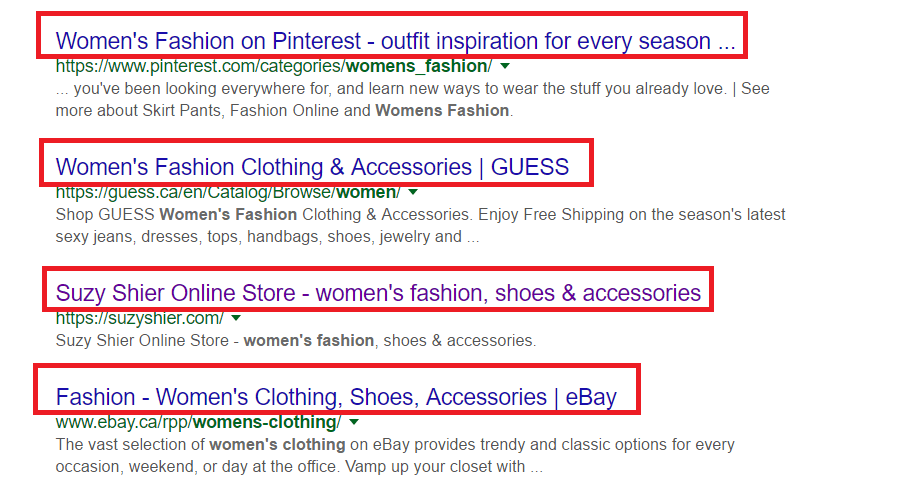
How to Use SEO in Your Meta Descriptions
Another important SEO concept is the Meta description. When you use a search engine, meta descriptions show up directly below the title tag. Keep them between 120 and 155 characters. They should be relevant and describe what the person will find on the page if they click through. If you nail this aspect of of our beginner’s guide to SEO you’ll really stand out from the crowd.
When it comes to dropshipping SEO in particular, make sure your description tags encourage clicks. Give the person a reason to want to click through to your site by letting them know what they’ll find through your meta description. You could do this by including information about a great price, a how-to guide, or an attention-grabbing list in the meta description. Read the title tags and meta descriptions of higher ranked pages for inspiration and examples. How can you write something that outranks them?
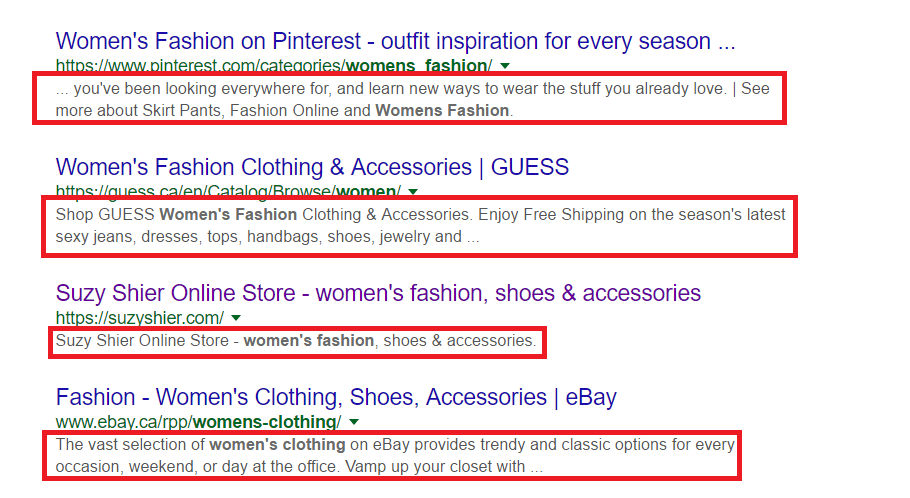
How to SEO Using Internal Links
Another crucial aspect of understanding how to use SEO is linking. Internal links are links that point from one page on your site to another. They are distinctly different than backlinks and external links. Internal links should always have the html tag, ‘do follow.’ This way, you’re signaling for search engine webpage crawlers to navigate to the page that it’s linking to, which grants ranking power from that page to the next. In other words, you can use internal links to tell the search engines which pages to rank. Of course, they also help your customers discover other pages on your website.
In dropshipping SEO, internal links indicate to the search engines which pages you want to have rank for specific keywords. Also, they help categorize your site for the search engines and boost domain authority. If you have a really good blog post or infographic page that has a lot of high authority, quality backlinks, adding a related internal link to a descriptive keyword may help the page to which you are linking rank better.
That in mind, the more internal links on a page, the less authority each can pass. If you have two internal links, for example, they each pass 50% authority. Three comes out to a 33.3% transfer. You also have to include navigation, category links, etc. into the equation. The link placement may also carry some weight. If you have three internal links and one is high up in your content and the other two are lower, the higher one may get 60% of the authority and the bottom two may get 20% each. Here’s a guide on building a good internal linking structure.
As you can see, internal links are immensely important to SEO. Add them when they are relevant and related, and be sure not to overdo it. This way you’ll achieve the right balance for boosting rankings without making your content look unnatural.
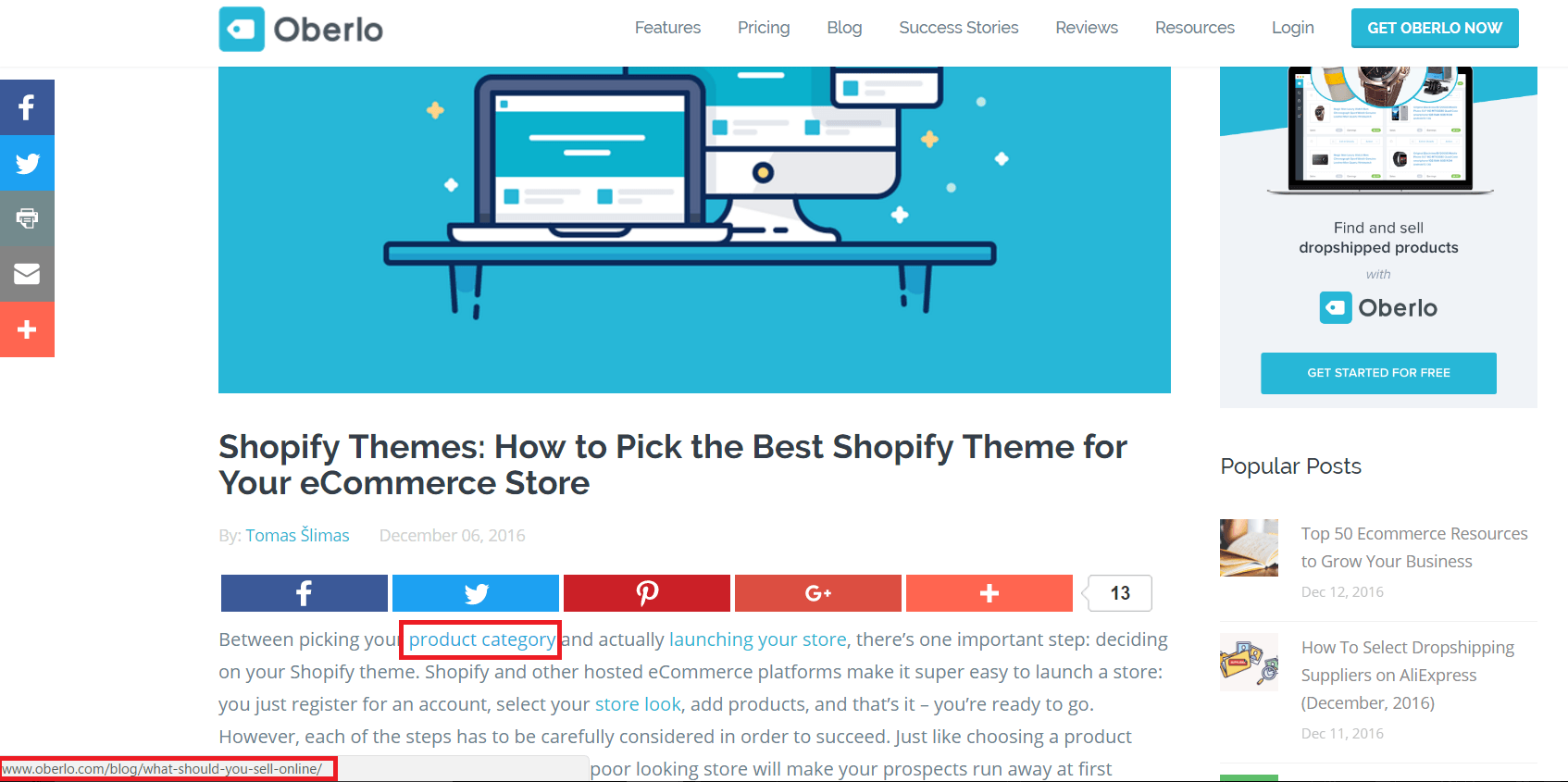
SEO Guide to Backlinks
When learning how to SEO, backlinks play an important role in driving traffic back to your site. That’s because backlinks are links that point from another website back to yours. Combined with the content on your website, they are the most important means through which you can get a website to rank highly in search engines. Search engines take extreme measures to ensure that a website’s backlinks are organic. Don’t buy backlinks to increase your domain authority, however, because your site will be penalized.
Here is the main jargon you’ll need to know with regard to backlinks:
- Do follow: These pass authority and help your site rank better.
- No follow: These link to you, but they do not pass authority so they will not help your website rank. They contain rel=”nofollow” somewhere in the <a href=” “> tag. You need a natural mix of do and no follow links.
- Keyword rich (anchor text): These are links off of specific phrases or keywords (anchors).
- Natural: Natural links will be based off of your company name, your name, or a variation of your URL or brand.
- Unnatural: Unnatural links are when you have tracking parameters attached, do follow links in sponsored posts, or anything that wouldn’t have occurred naturally like links to a category page on an ecommerce site, for example, an affiliate link.
Having too many keyword rich or unnatural backlinks may lead to penalties. Don’t build too many of them. Make it less than 20%, possibly even 10% of your total link profile.
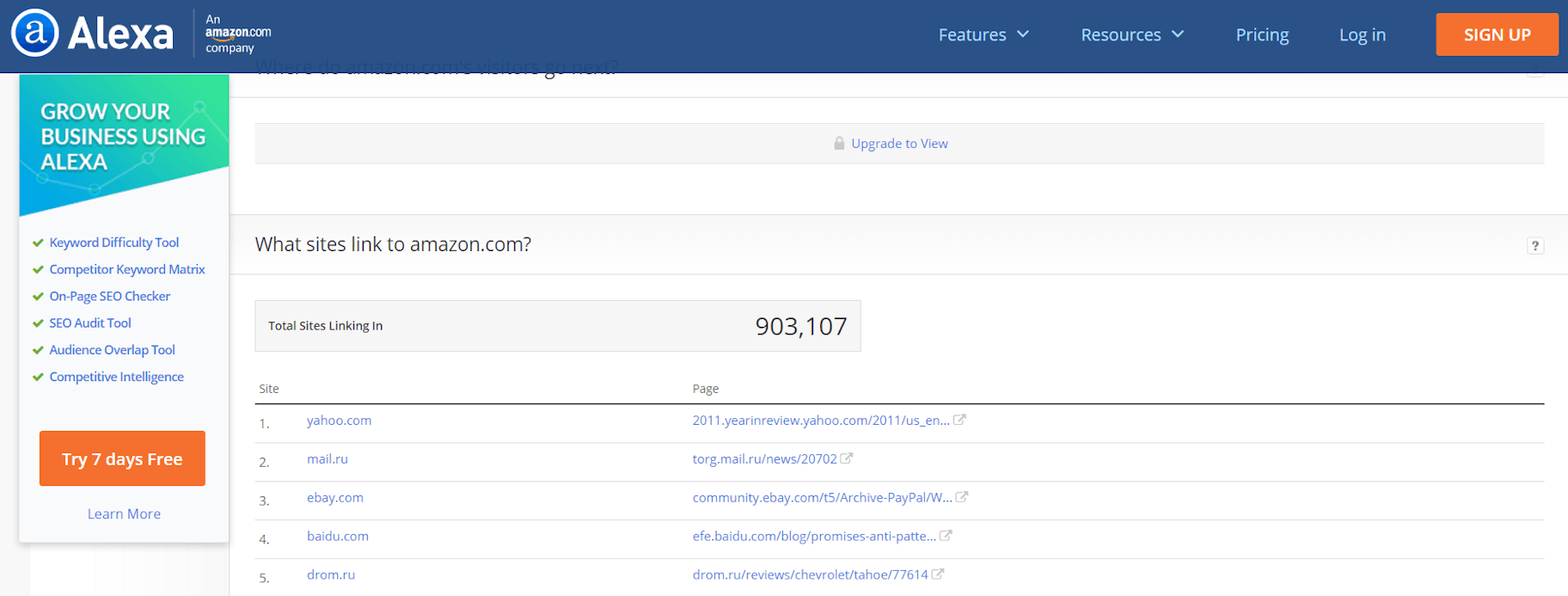
How to SEO Better Using External Links
Another important part of this beginner’s guide to SEO is understanding how external links play into the equation. When clicked, external links take a visitor to other sites than your own. If you own an ecommerce store, incorporate external links into blog posts only. Good reasons to add an external link to a blog post include when you source a site or mention something of relevance to your audience.
Before you add any external link, first read Google’s guidelines on do follow vs. no follow links and then ask yourself the following:
- Will linking to this website benefit my reader?
- Is the page I’m linking to going to be around for a long time, or could this site go under?
- Is there other content on the site that might be irrelevant or not good for my readers?
If you said yes to the first two and no to the third, this is probably a good site to link to.
Meanwhile, the reason you don’t want to put external links on a shopping page is that it will take a person off of that page if they choose to follow it. This can distract them from making a purchase.
Canonical Links: SEO Guidelines for Beginners
Next up on this guide to SEO for beginners is canonical links. Canonical links are links that tell search engines which page is the one to index in their search results. Suppose you have three pages on your site that all feature the same product, content, and image. You would use a canonical link to indicate which is the right one to index. Note that you don’t want all three competing against each other for space, nor do you want duplicate content issues as we discussed earlier in this SEO guide. If you’re running a split test experiment to determine how successful some of your store’s pages are, you might also want to use canonical links.
Create a Sitemap for Your Dropshipping SEO Strategy
An essential SEO beginner guideline is learning how to use SEO to create a sitemap for your website. A sitemap is essentially just a listing of all of the pages on your website that Google ought to know about. They’re broken down from the highest level pages on your site and include categories, subcategories, and product pages. You can create sitemaps in multiple ways with links, and XML feeds, among other simple methods. Be sure you avoid having a 404 or 301 redirect and pages on your sitemap.
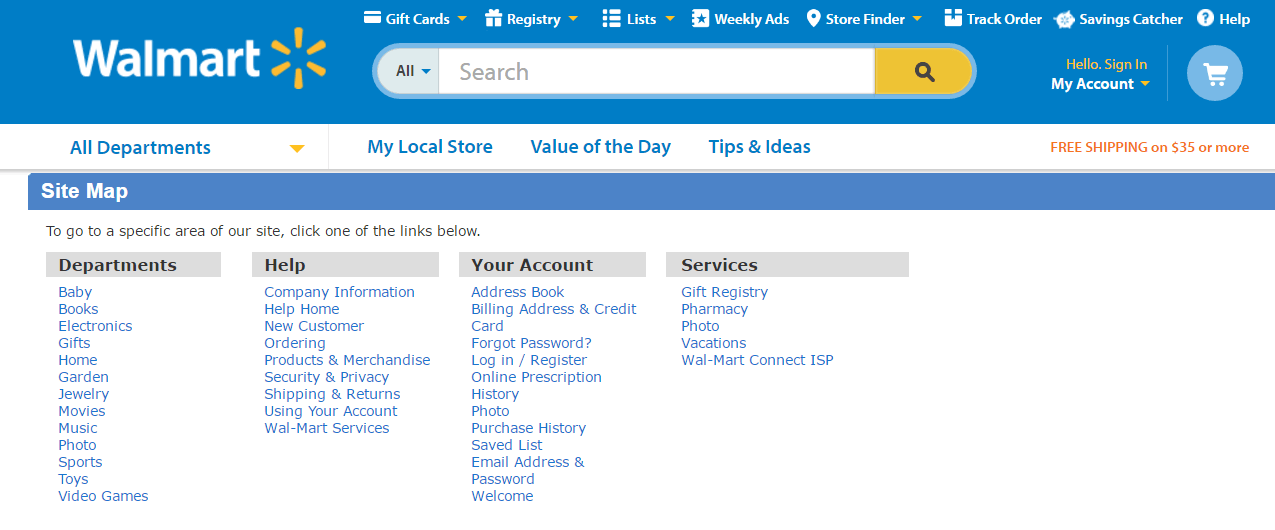
How Paginated Pages Can Boost Your Rankings
Another important aspect of understanding how to use SEO is pagination. Pagination refers to a series of pages on your website. Think about a product category page that contains pages 2, 3, 4, 5, etc. Previously, you would have needed to use a canonical link to a page that had all of your products on it, but now Google has devised rel prev and rel next. By incorporating this into a paginated series you can guide it through the series without having to worry that Google will penalize you for duplicate content, as mentioned earlier in this beginner’s guide to SEO.
SEO Guidelines for Schema
The following words on Schema are an invaluable aspect of understanding SEO for beginners. Schema.org is a resource put together by all of the major search engines. It provides you with the code and snippets to tell search engines the specifics of your page. For example, code is used for showing that there is a video on the page.
Notably, by adding schema markup to your pages (it’s a lot easier than you think, don’t let it overwhelm you), you can further help the major search engines know what that page is about. Also, it shows what the end user will find on your page. Next, you give them new features to show in the search results (videos images next to a result) as well as further define the user experience. Schema is an important and often overlooked aspect of SEO that can help give you an advantage as a data feed and dropshipping site.
Datafeeds and Dropshipping SEO
Before we move on to the actionable tips and tricks you can use to boost your rankings and organic traffic for SEO, you’ve probably seen the term ‘data feed’ mentioned a few times throughout this post. Particularly if you are dropshipping, it is likely that you are drawing a lot of information about your products from descriptions to photos to basic product data from an existing product data feed. The data feed is a file of info made available by your supplier, as it is accessible for merchants to use as they import items into their stores. No doubt data feeds are incredibly useful for ecommerce store owners, especially when the products are being dropshipped. Just note that it’s important not to copy-paste the contents of a data feed into your store without changing it at all because this will be regarded as duplicate content, but more on that next.
How to SEO: Tips & Tricks
Now that we’ve covered the key concepts associated with knowing how to use SEO effectively, the second portion of this guide to SEO for beginners is filled with actionable tips and tricks you can use for applying all of the above information successfully.
Avoid Using Duplicate Content
No beginner’s guide to SEO would be complete without stressing the importance of avoiding duplicate content wherever possible. Duplicate content refers to when two websites have the same content (and in severe cases the same exact code).
Since dropshippers don’t normally hold inventory, they rely heavily on data feeds provided by other stores, warehouses, and manufacturers. These feeds are the XML feeds and spreadsheets that supply product and inventory to their stores.
Because the content, images, descriptions, and everything else within the feed goes to every site using it, the content isn’t ‘unique.’ Being that it’s not unique, the websites created with them end up with a problems sometimes referred to as ‘duplicate content.’
Therefore, search engines have a hard time knowing which one to rank above the others. Data feed sites rarely achieve good SEO rankings if they use the feed provided (duplicate) content. This is why it’s also important to follow our SEO beginner guidelines using the additional tips below in order to make up for any usage of this data feed information in your rankings.
Here is what to start with to help make your site unique from other stores that use the same feeds.
Improve Your SEO Rankings with Unique Images
One the topic of creating unique content, the next tip for boosting rankings on this SEO guide involves taking your own original product photos. While it might take a bit of extra work in the beginning, this will really help you improve your dropshipping SEO rankings. You’ll be able to distinguish your products from other merchants who are selling the same dropshipped items as you (possibly even from the same suppliers) while also avoiding duplicate content.
If, for whatever reason, you can’t take your own pictures, download the product images from the data feed. Next, rename them so that they describe the product in the image, and upload them to your database and server.
Keep in mind that the way you name your images is important. If you sell medium-sized and large blue hats, you don’t want to confuse the search engines if they’re both called blue hat on your ecommerce site. Naming the image medium-blue-hat.jpg and large-blue-hat.jpg will be more search engine friendly. Even if it seems minor, this is an essential step in our beginner’s guide to SEO so make sure that you don’t forget!
Add Alt Tags to Your Images
On the topic of images, the next actionable step in this beginner’s guide to SEO is to make your alt tag reflective of the image name. This is one of the things that many search engines use to decide what an image is about and when to show it to a searcher. It appears in the HTML here:
<img src=”image_url” alt=”insert_alt_tag_here”>
Optimize Your Image Titles
Another key to learning how to use SEO successfully is adding image titles and captions. These should be similar or exactly the same as the image name and alt tag if you decide to use them. The title attribute should be included in the title=”insert title here” section of the HTML.
Don’t overdo it here, either. You don’t want too many keywords, descriptive terms (modifiers), or other words in the image’s name or tags. Again, this could be seen as “keyword stuffing” and may result in penalization.
Alternatively, you can optimize your image filenames, ALT tags and Titles using a 3rd party app like Minifier
Become a Master of Product Descriptions
The product descriptions you import, if left unchanged, are also considered duplicate content. This is one of the more important things you’ll want to fix. As we have established already, having unique and useful content on your pages will set you apart from your competitors. To improve your dropshipping SEO, consider rewriting both your long and short product descriptions.
One of the many important SEO guidelines is that both the product’s long and short descriptions must be unique. If your product descriptions are the same as everyone else’s, you risk not appearing in search engines. Writing original, helpful, and accurate descriptions will be key in getting these pages to pick up both long tail and highly competitive keywords. If you can nail your product descriptions, then you’ll be well on the way to knowing how to SEO for your ecommerce store.
Display Your Product Specs
In dropshipping SEO, if your products have specs that come with a data feed, find a unique way to display or talk about the specs rather than merely copy-pasting the information. Although the search engines expect the specs to be equal in nature, that doesn’t mean you can’t give details about what they mean or display them in a unique and more helpful way.
Beginner’s Guide to SEO: What Not To Do
There are a ton of SEO beginner guidelines out there with shortcuts and side steps for getting quick and easy backlinks or otherwise boosting traffic without having to commit to learning SEO in depth.
In dropshipping SEO, however, many of the blackhat tactics you’ll find may eventually lead to your website getting penalized. Unfortunately, you risk not being able to rank again. In addition, you’d have to do even more work just to get the penalty removed. Furthermore, if you do get a penalty, it can take years for it to be lifted. Therefore, the last point to make in this guide on how to use SEO for your business is that it’s crucial you don’t cut corners. Here are a few final points on what to avoid doing when attempting to optimize your online store and drive more organic traffic to it.
Here is what you want AVOID when building links:
- Directory submissions: Unless they are 100% niche, content relevant and manually updated. Going with ‘no follow’ is much smarter if you do choose to use these.
- Blog comments: Don’t use these, especially off of keywords.
- Forum comments and links: Because they’re so easy to do and anyone can get them, the search engines frown on forum comments and links.
- Automated link builders: These are software programs that use bots and spiders to comment on blogs, forums and communities for you. Using this method can create a bad brand image within relevant online communities and among bloggers. Also, the backlinks are easily mapped to your site, making you more likely to be penalized.
- Link exchanges: Try to avoid reciprocal linking. Too many of these look unnatural and is actually one of the first SEO malpractices to be made into a penalty by Google.
- Link farms: Sites and services that go out and create link farms are another way to get mapped and penalized.
- Sponsored posts: Giving people or influencers money or products in exchange for a post with a ‘do follow’ link may cause your website (and theirs) to get penalized. You probably will want to work with real influencers, but make sure everything is ‘no follow’ so that your site doesn’t increase its risk of getting penalized.



SEO for Beginners: Conclusion
There’s a lot that goes into dropshipping SEO. Whether you have a data feed or dropshipping ecommerce store or you warehouse the product, this SEO guide provides you with the fundamentals for better optimizing your store through SEO.
Note that part of making these tips and key concepts work for you is that you update your content regularly. Dropshipping SEO is not a quick or easy way of boosting traffic. It can take a complex level of knowledge to truly master it, and it requires a long term approach. With practice and adhering to these beginners’ guidelines for SEO, you are already on the right track for getting started!
Not to mention, once you begin seeing the results of your efforts, you’ll find that SEO is a pivotal part of growing organic traffic for your ecommerce business, so be patient and never give up!
Want to learn more?
- Digital Marketing Made Simple: The Complete Beginner’s Guide
- Everything You Need to Know About Dropshipping
- The Ultimate Guide to Writing Meta Descriptions
- 10 Ways to Make Money Blogging
Based on what you’ve learned from this beginner’s guide to SEO, which of the SEO beginner guidelines will you work on first? Let us know in the comments below!
